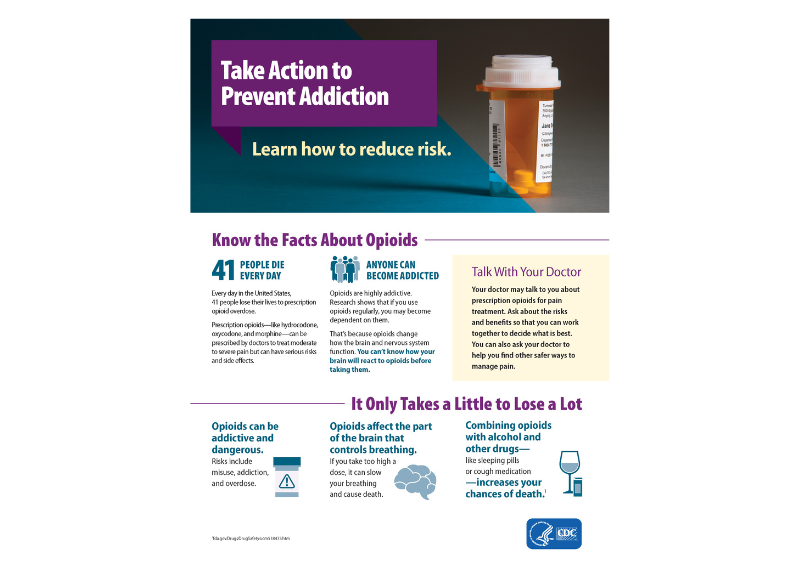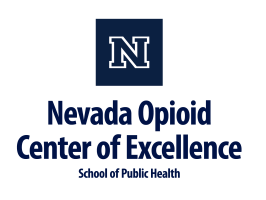Websites
Prevention Technology Transfer Center (PTTC) Network
The Prevention Technology Transfer Center (PTTC) Network works to improve implementation and delivery of effective substance use prevention interventions, and provide training and technical assistance services to the substance misuse prevention field.
Substance Abuse and Mental Health Services Administration (SAMHSA)
SAMHSA offers a wealth of resources for practitioners, including treatment guidelines, training materials, and publications specific to opioid use disorder. Their website provides access to evidence-based practices, treatment guidelines, and clinical tools.
Tools & Resources
Opioid Epidemic Response: Employer Toolkit
Substance use and substance use disorder affects employees, workplaces, families, and communities. Employers have the opportunity to identify early signs and symptoms of a substance use disorder, and help connect employees to treatment and recovery supports. This toolkit developed by the Minnesota Department of Health includes five steps to prevent and address substance use disorder within your workplace.
Tools for Overdose Prevention
To help public health practitioners prevent overdose, the National Council for Mental Wellbeing, in partnership with the Centers for Disease Control and Prevention, developed these resources and tools for overdose prevention.
PACT Coalition
The PACT Coalition seeks to empower Southern Nevada with the resources to prevent substance misuse for all ages and promote recovery through culturally competent advocacy, education, stigma reduction, support, and outreach. A diverse cross-section of community leadership is represented by the PACT Coalition that will work together to ensure a sustainable future and a healthier community. PACT Coalition keeps an updated resource list for Southern Nevada.
Join Together Northern Nevada
Join Together Northern Nevada (JTNN) is a coalition based in Northern Nevada whose mission is to create a healthy drug-free community by building successful partnerships to support prevention education and outreach. JTNN keeps an updated resource list for Washoe County students, staff, and families.
Adverse Childhood Experiences and the Role of Substance Misuse Prevention
This tool educates prevention professionals about Adverse Childhood Experiences (ACEs), including what ACEs are, their prevalence, their impact on substance use and other behavioral health outcomes, and how to integrate addressing them into existing prevention.
Overdose Prevention and Response Toolkit
This toolkit provides guidance to a wide range of individuals on preventing and responding to an overdose. The toolkit also emphasizes that harm reduction and access to treatment are essential aspects of overdose prevention.
Publications
Evidence-Based Strategies for Preventing Opioid Overdose: What’s Working in the United States
There are strategies that can assist community leaders, local and regional organizers, non-profit groups, law enforcement, public health, and members of the public in understanding and navigating effective ways to prevent opioid overdose in their communities. Use this information as a reference for evidence-based practices that have been successfully implemented in the U.S.
Growing Up Drug Free: A Parent’s Guide to Prevention
This guide offers parents the information they need to raise children who understand the risks of substance use. This guide includes an overview of substance use among children, youth, and young adults; descriptions of substances young people may use; a look at risk factors that may make children, youth, and young adults try alcohol, tobacco, or other drugs—and protective factors that help offset those risks; age-specific suggestions for how to talk to young people about alcohol, tobacco, and other drugs; and tips on what parents can do if they suspect their child is using alcohol, tobacco, or other drugs. The guide, “Growing Up Drug-Free: A Parent’s Guide to Prevention,” was funded by the U.S. Department of Justice, Drug Enforcement Administration and U.S. Department of Education, Office of Safe and Supportive Schools.
Posters & Infographics

Prevent Addiction Fact Sheet
This face sheet contains information for patients about preventing opioid addiction.
Download the fact sheet.
Webinars & Online Learning
Current News & Research
More resources will be added soon, please check back.
